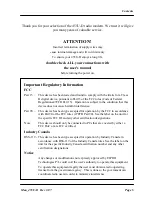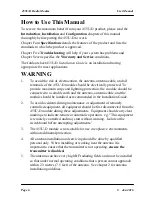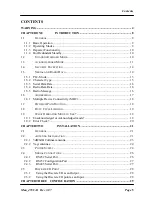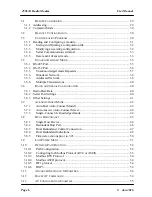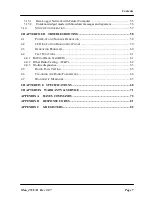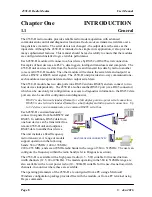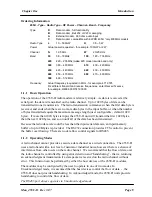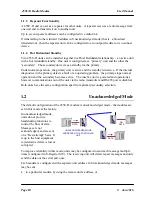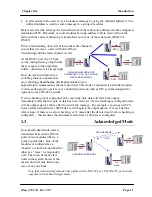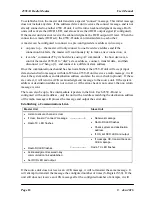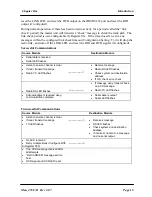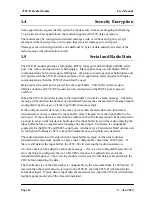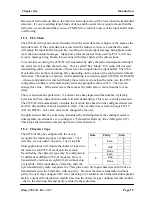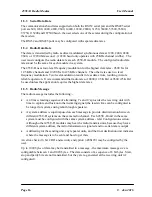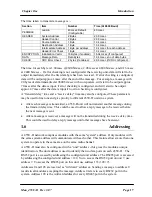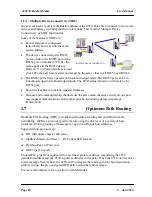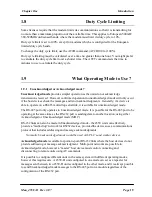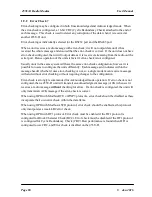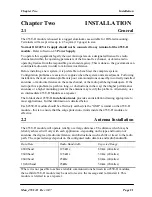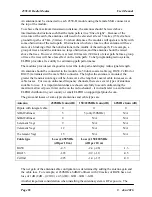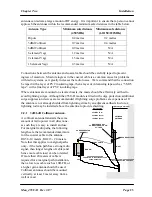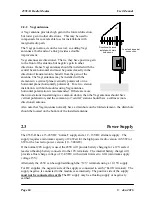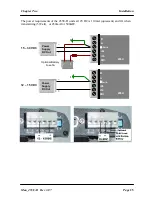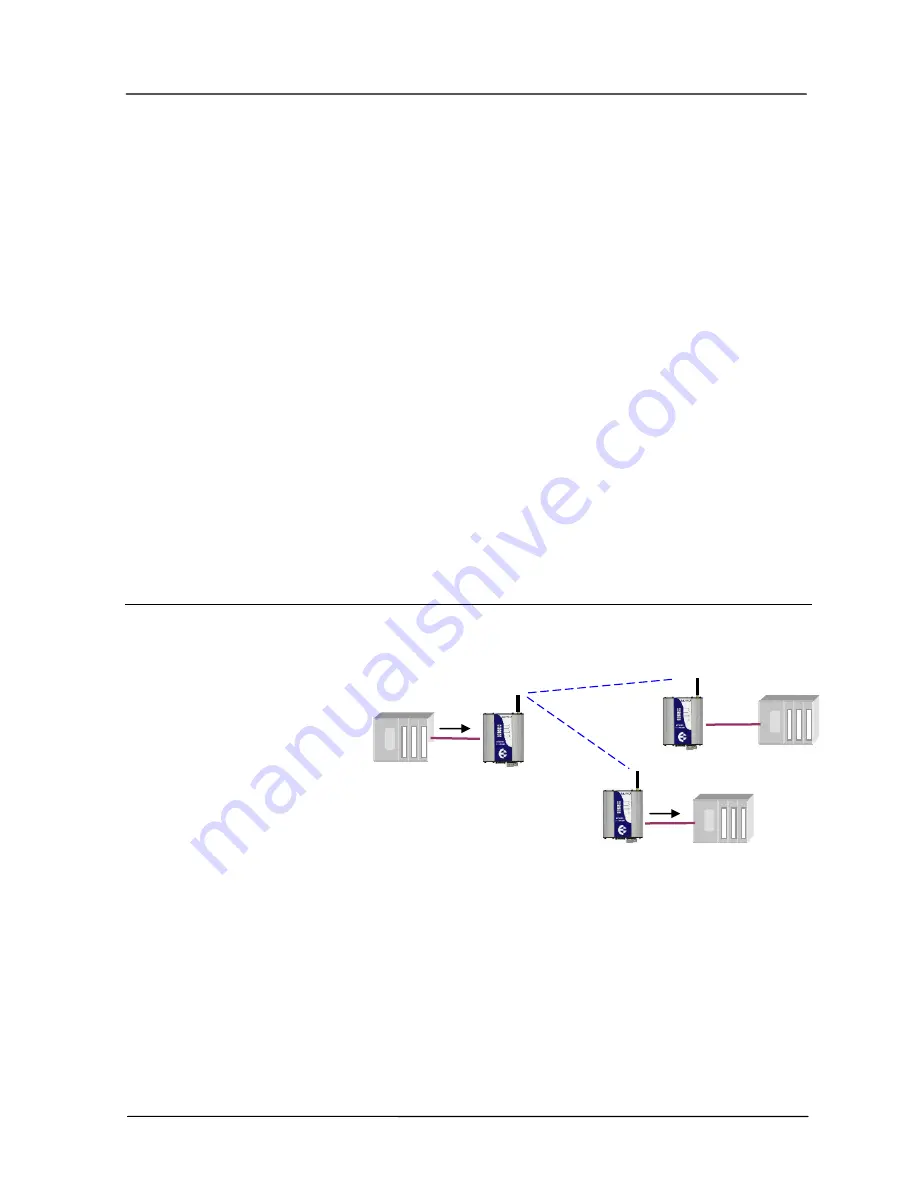
455U-D Radio Modem
User Manual
Page
10
©
Jan 2016
1.1.3 Repeater Functionality
A 455U-D unit can act as a repeater for other units. A repeater receives a radio message from
one unit and re-transmits it on to another unit.
Up to seven repeater addresses can be configured in a radio link.
If transmitting to the wildcard 0 address in Unacknowledged mode (that is, a broadcast
transmission), then the repeater unit can be configured to also output the data to its own host
device.
1.1.4
Hot Redundant Standby
Two 455U-D units can be installed together in a Dual Redundant relationship - an active unit
with a hot redundant standby. One unit is configured as a “primary” unit and the other the
“secondary”. The secondary unit acts as a standby for the primary.
Under normal operation, the primary unit is active and the standby is inactive. If the internal
diagnostics in the primary detects a fault or an operating problem, the primary stops normal
operation and the secondary becomes active. The inactive unit is powered and operational,
however communications out of the unit via the radio transmitter and RS485 port is disabled.
Both units have the same configuration apart from primary/secondary selection.
1.2
Unacknowledged Mode
The default configuration of the 455U-D modem is unacknowledged mode - the modules are
set in this mode at the factory.
In unacknowledged mode,
units do not provide
handshaking functions to
control the flow of data.
Messages are not
acknowledged, and are sent
on a “Best attempt” basis. It
is up to the host equipment
to determine if data is lost or
corrupted.
To improve reliability in this mode, units may be configured to send each message multiple
times (configured in S-Register S29). The receiving unit will detect repeat messages and only
send the data out the serial port once.
Each modem is configured with a separate unit address. In Unacknowledged mode, messages
may be sent
to a particular modem by using the remote unit’s address, or
UNACKNOWLEDGED MODE
ADDRESSED TO A PARTICULAR
UNIT
DATA
DATA
NO
DATA


